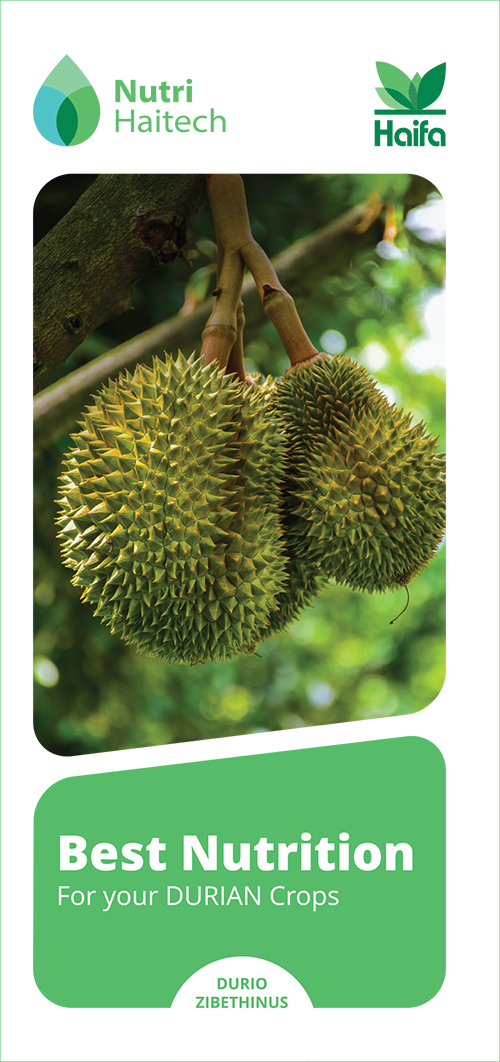Get the most of your Durian Fertilizer
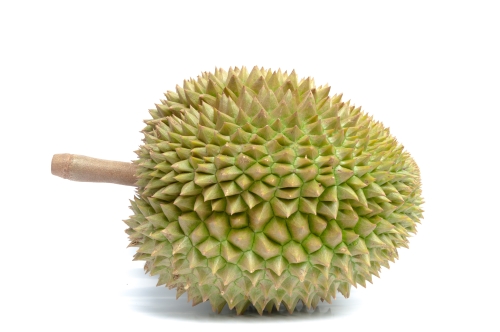 Durian, native to Southeast Asia, requires careful nutritional management to achieve consistent high yields and preserve long-term orchard productivity. Like most perennial crops, durian follows distinct vegetative, flowering, and reproductive phases. A well-designed fertilization program must align with these stages to balance growth and fruiting, prevent alternate bearing, and sustain tree health.
Durian, native to Southeast Asia, requires careful nutritional management to achieve consistent high yields and preserve long-term orchard productivity. Like most perennial crops, durian follows distinct vegetative, flowering, and reproductive phases. A well-designed fertilization program must align with these stages to balance growth and fruiting, prevent alternate bearing, and sustain tree health.
With Haifa’s Nutri Haitech™ approach – combining advanced fertilizers, digital tools, and agronomic expertise – you can tailor nutrition precisely to your orchard’s needs. This strategy improves fruit quality and yield while enhancing efficiency, sustainability, and orchard resilience.
General growth conditions
Durian thrives in hot, humid tropical climates with average temperatures of 25–32°C (77–90°F). Prolonged daily temperatures below 22°C hinder growth and fruiting. Optimal humidity ranges between 75–85%, with a 1–2 month dry period needed to initiate flowering.
Annual rainfall should reach about 1,500 mm, supplemented by irrigation to support both vegetative and reproductive growth. Trees do poorly at elevations above 900 m.
Durian prefers light, well-drained soils on gentle slopes (5–10°). Avoid planting in flat lowlands with high water tables, as waterlogging severely damages roots. Drainage systems may be necessary to ensure proper soil conditions.
Soil Requirements
Conduct a comprehensive soil analysis with a trusted laboratory to optimize your fertilization program. | |||||||||||
Climate Considerations
| |||||||||||
Irrigation Guidelines Water quality parameters:
|
Nutrition by Growth Phase
 | Post-harvest: Support canopy recovery for optimal photosynthesis. Apply balanced NPK based on soil analysis, yield, and tree vigor. Maintain lime applications to correct soil pH and Ca:Mg ratio. |
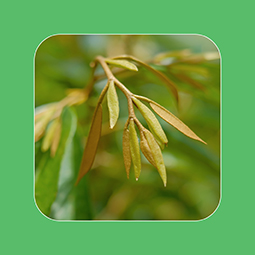 | Vegetative: Apply N:P₂O₅:K₂O at a 1:1:1 ratio to sustain balanced vegetative growth. |
 | Pre flowering: Shift nutrition toward P and K while lowering N to reduce vegetative competition with flowers. Apply regulated deficit irrigation (RDI) after leaf development to restrict excess shoot growth. |
 | Flowering and fruit set: Increase K in the nutrient balance. Reduce irrigation during flowering, then increase again at fruit set. |
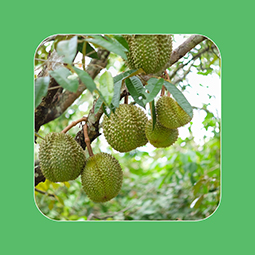 | Fruit development: Maintain high K to support reproductive growth and prevent fruit/shoot competition, reducing fruit drop. |
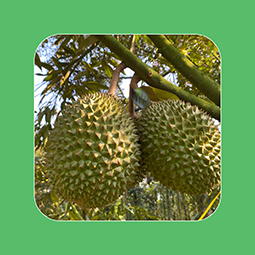 | Fruit maturation: Continue high-K nutrition. Magnesium is essential to sustain photosynthesis. |
 | Ripening & Harvest: Gradually reduce NPK supply. Apply final foliar K sprays before harvest to enhance fruit quality. |
Durian fertilization program
Note: The hereunder should be regarded as a general guide only. The exact fertilization program should be determined according to the specific crop needs, soil type, water analysis, cultivar, and most important - the grower’s experience.
| Stage | No. of days | Recommended fertilizers | ||
| Soil applicaton | Nutrigation™ | Foliar sprays | ||
Post Harvest (building reserves) | 15 | |||
Early vegetative | 45 |
| ||
Late vegetative | 45 |
| ||
Flowering & fruit set | 60 | |||
Early fruit growth | 35 |
| ||
Fruit sizing | 35 |
| ||
Maturity | 30 |
| ||
Ripening & harvest | 20 |
|
| |
